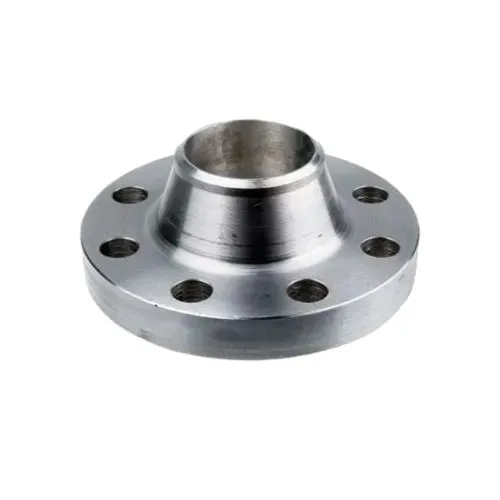-
Cangzhou Yulong Steel Co., Ltd.
-
Phone:
+86 13303177267 -
Email:
admin@ylsteelfittings.com
- English
- Arabic
- Italian
- Spanish
- Portuguese
- German
- kazakh
- Persian
- Greek
- French
- Russian
- Polish
- Thai
- Indonesian
- Vietnamese
- Zulu
- Korean
- Uzbek
- Hindi
- Serbian
- Malay
- Ukrainian
- Gujarati
- Haitian Creole
- hausa
- hawaiian
- Hebrew
- Miao
- Hungarian
- Icelandic
- igbo
- irish
- Japanese
- Javanese
- Kannada
- Khmer
- Rwandese
- Afrikaans
- Albanian
- Amharic
- Armenian
- Azerbaijani
- Basque
- Belarusian
- Bengali
- Bosnian
- Bulgarian
- Catalan
- Cebuano
- China
- China (Taiwan)
- Corsican
- Croatian
- Czech
- Danish
- Esperanto
- Estonian
- Finnish
- Frisian
- Galician
- Georgian
- Kurdish
- Kyrgyz
- Lao
- Latin
- Latvian
- Lithuanian
- Luxembourgish
- Macedonian
- Malgashi
- Malayalam
- Maltese
- Maori
- Marathi
- Mongolian
- Myanmar
- Nepali
- Norwegian
- Norwegian
- Occitan
- Pashto
- Dutch
- Punjabi
- Romanian
- Samoan
- Scottish Gaelic
- Sesotho
- Shona
- Sindhi
- Sinhala
- Slovak
- Slovenian
- Somali
- Sundanese
- Swahili
- Swedish
- Tagalog
- Tajik
- Tamil
- Tatar
- Telugu
- Turkish
- Turkmen
- Urdu
- Uighur
- Welsh
- Bantu
- Yiddish
- Yoruba

Nov . 06, 2024 08:55 Back to list
Comparison of ANSI 150 Flange Specifications and Applications in Industrial Settings
Understanding the ANSI 150 Flange Specifications and Applications
Flanges play a crucial role in piping systems, facilitating the connection of pipes, valves, pumps, and other equipment. Among the various types of flanges available, the ANSI 150 flange is one of the most commonly used. This article delves into the specifications, features, applications, and benefits of ANSI 150 flanges, particularly the 36-inch variant.
Specifications of ANSI 150 Flange
The ANSI (American National Standards Institute) flanges are classified based on their pressure rating, which determines their performance under specific conditions. The ANSI 150 flange, designed to operate at a maximum pressure of 150 PSI (pounds per square inch), has specific dimensions and material standards outlined by the ASME B16.5 specification.
For a 36-inch ANSI 150 flange, the dimensions are as follows
- Diameter 36 inches nominal size - Bolt Circle Diameter Approximately 44.5 inches - Number of Bolt Holes 12 - Bolt Hole Diameter Typically 1.5 inches
These dimensions, along with a minimum thickness of 1.312 inches, ensure the flange can withstand the pressure and stresses imposed during service. Materials often used for ANSI 150 flanges include carbon steel, stainless steel, and various alloys, providing a range of options suitable for different environments.
Features
One of the key features of ANSI 150 flanges is their versatility in applications. These flanges can be utilized in different industries and environments, accommodating various fluid types—including water, steam, oil, and gas. The flat face design is particularly advantageous for ensuring a secure seal when paired with gaskets, preventing leaks and maintaining system integrity.
Another significant aspect is compatibility. ANSI 150 flanges can be easily connected to other ANSI standard flanges, making installations straightforward and efficient. This standardization simplifies maintenance and repairs, as parts can be sourced without the need for custom solutions.
Applications
flange 36 ansi 150

The ANSI 150 flange is widely utilized across many sectors, including
1. Oil and Gas Used in pipelines for transporting hydrocarbons, where reliability and safety are paramount. 2. Water Treatment Plants Essential for connecting various components in water supply systems to ensure smooth operation.
3. Chemical Processing Ideal for use in chemical plants where diverse fluids and materials are processed.
4. HVAC Systems Frequently found in heating, ventilation, and air conditioning systems for effective fluid movement.
5. Power Generation Often utilized in power plants where high-pressure steam lines require robust flange connections for safety.
Benefits
Selecting ANSI 150 flanges, particularly at the 36-inch size, comes with several benefits. First, their robust construction allows them to withstand significant pressure without compromising safety. This strength, combined with the ease of installation, leads to reduced labor costs during setup.
Additionally, the ANSI 150 standard ensures that flanges are compatible across different manufacturers, making it easier to find suitable components for repairs or replacements. This compatibility, along with the availability of diverse materials, allows for tailored solutions based on specific environmental conditions and fluid types.
Finally, using ANSI 150 flanges enhances overall system efficiency by reducing the possibility of leaks and failures, thus minimizing downtime and maintenance costs. This reliability is crucial in industries where continuous operation is vital.
Conclusion
The ANSI 150 flange, especially in a 36-inch size, is a fundamental component in many industrial applications, thanks to its robust specifications, versatile features, and extensive compatibility. Understanding these aspects is essential for engineers and technicians involved in designing and maintaining piping systems. By choosing the right flanges, industries can achieve efficient, reliable, and safe operations, contributing to overall productivity and success.
Latest news
-
ANSI 150P SS304 SO FLANGE
NewsFeb.14,2025
-
ASTM A333GR6 STEEL PIPE
NewsJan.20,2025
-
ANSI B16.5 WELDING NECK FLANGE
NewsJan.15,2026
-
ANSI B16.5 SLIP-ON FLANGE
NewsApr.19,2024
-
SABS 1123 FLANGE
NewsJan.15,2025
-
DIN86044 PLATE FLANGE
NewsApr.19,2024
-
DIN2527 BLIND FLANGE
NewsApr.12,2024
-
JIS B2311 Butt-Welding Fittings LR/SR 45°/90° /180°Seamless/Weld
NewsApr.23,2024











